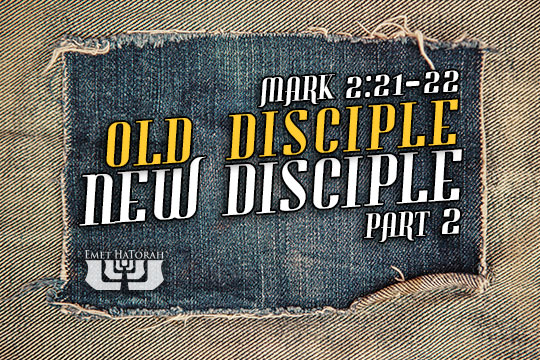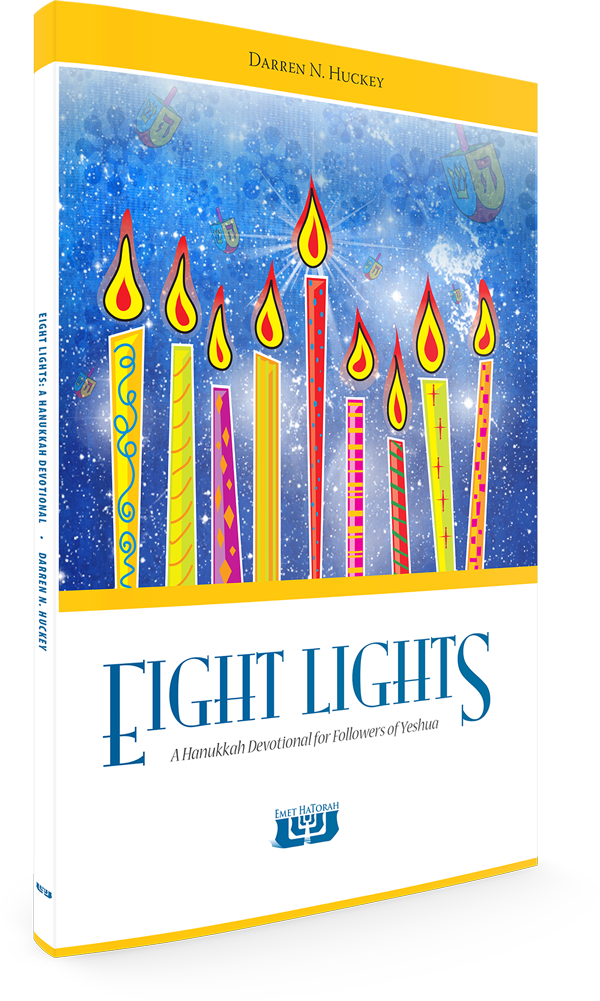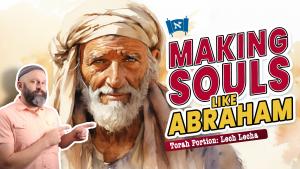Old Disciple, New Disciple - Part 2
Series:

Note: This Dust of the Master is a revised and updated version of an article from three years ago. Click here to read Part 1.
No one sews a piece of unshrunk cloth on an old garment. If he does, the patch tears away from it, the new from the old, and a worse tear is made. And no one puts new wine into old wineskins. If he does, the wine will burst the skins—and the wine is destroyed, and so are the skins. But new wine is for fresh wineskins. (Mark 2:21-22)
In Part 1 of “Old Disciples, New Disciples,” we took note of how the historical and cultural context give us insights into Yeshua’s parables of the Torn Garment and the Wine Skins. In Part 2 we will take a look at the popular interpretation of these parables and see if it is congruent with Yeshua’s other teachings.
According to traditional Christian interpretation, the meaning of these parables seems obvious: Yeshua is chastising the current religious system of his day and showing the superiority of Christianity over Judaism. According to this interpretation, Judaism is the old garment / old wine, whereas Christianity is the new garment / new wine. Yeshua seems to be saying that the old religion of Judaism is being replaced by the new religion of Christianity, and that these two religions are incompatible with one another. This concept seems to be confirmed by Paul in his epistle to the believers in Rome:
But now we are released from the law (i.e. the Torah), having died to that which held us captive, so that we serve in the new way of the Spirit and not in the old way of the written code. (Romans 7:6)
But this interpretation has several problems. The first is that this interpretation is anachronistic. Christianity as a separate religion did not exist during the lifetime of either Yeshua or the Apostles. It wasn’t until the late second century that Christianity was considered a religion distinct from Judaism. Until that time, Christianity was simply a sect, a denomination, with Judaism. Neither Yeshua, nor his disciples, ever intended to create a new religion apart from the biblical expression of Judaism. They all practiced Judaism, not Christianity. To interpret Yeshua’s parables to contrast Judaism with a religion that didn’t yet exist does not hold up to scrutiny. This interpretation only arose after the solidification of Christianity into a religion divorced from Judaism, a process which took nearly two centuries to complete.
Second, why would Yeshua, the Messiah of Israel, be introducing a new religion to the Children of Israel who were strictly forbidden from adopting new religions? Deuteronomy 13 specifically condemns any attempt to “leave the way in which the LORD your God commanded you to walk” (Deuteronomy 13:5). This is why Judaism has traditionally rejected Christian evangelism. The Children of Israel are commanded to reject anyone who would lead them away from the ways of their forefathers, even if it is a prophet demonstrating signs and wonders. They are to reject that prophet, because “the LORD your God is testing you, to know whether you love the LORD your God with all your heart and with all your soul” (Deuteronomy 13:3). Again, Yeshua was not introducing Christianity in these parables.
Last, this interpretation is not consistent with Yeshua’s other teachings. Yeshua’s teachings were almost entirely centered around a return to Torah (repentance) and the coming of the Messianic Era (the Kingdom of Heaven). He was focused on reforming his own religion, Judaism, rather than creating a new one. He deeply longed for Israel to forsake their wicked ways—hypocrisy, slander, baseless hatred, etc.—and return to the righteous path given to them in the Torah, but they would not listen:
O Jerusalem, Jerusalem, the city that kills the prophets and stones those who are sent to it! How often would I have gathered your children together as a hen gathers her brood under her wings, and you were not willing! (Matthew 23:37)
In summary, Yeshua and his disciples operated completely within the framework of Judaism. Yeshua never intended on creating a new religion, especially one that would be contrasted against the religion he himself practiced. Obviously, our traditional interpretation fails on many levels. But if this is not the correct interpretation, then how should we understand these parables? In Part 3 of our series we will explore some parallels to Yeshua’s teachings found in rabbinic texts. We will see how intertextual comparisons between the Apostolic Scriptures and other early Jewish sources can help us better understand Yeshua’s intent in these parables. This process of comparison will then allow us to begin understanding Yeshua’s teachings from a perspective within Judaism, rather than outside of it.








